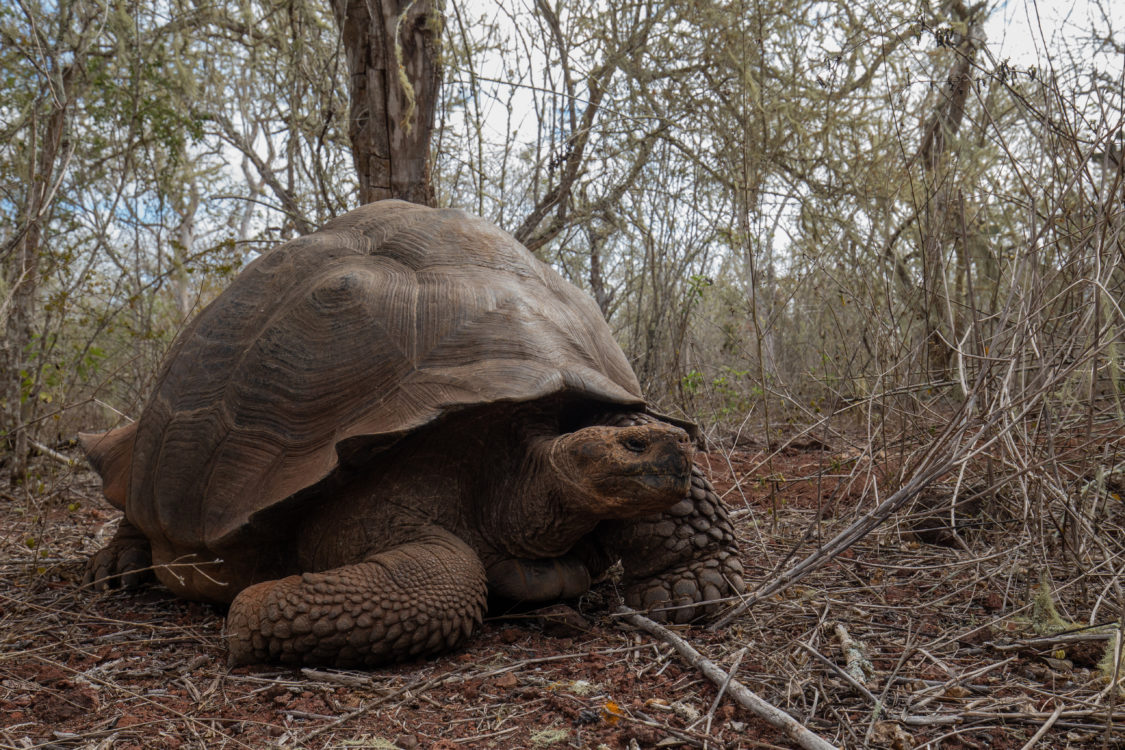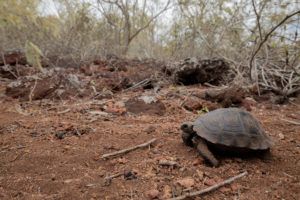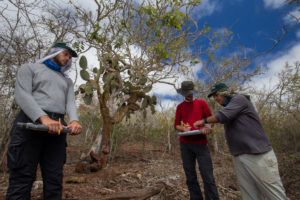Galapagos Giant Tortoises

Funding for this project has now finished
Two centuries ago, the Galapagos Islands were home to more than 200,000 giant tortoises; today four species are extinct and only 10% of the original number remain. The rescue and eventual recovery of the tortoise populations has been slow and steady.
The Problem

The dramatic decline of the Galapagos giant tortoises was due primarily to over-exploitation by whalers in the first half of the 19th century; they collected live tortoises by the hundreds for food on their long voyages. In more recent years, Galapagos tortoises have been and continue to be threatened by predation and habitat destruction from invasive species, and increasing human-tortoise conflicts on the larger, human-inhabited islands. Two species co-exist on Santa Cruz Island, which has the largest human population. A newly identified species, the Eastern Santa Cruz giant tortoise has a small population (a few hundred) and is relatively unknown. The range of the larger population, the Western Santa Cruz giant tortoise, overlaps with human-inhabited farmlands and in recent years, the expanding population has begun to arrive at the outskirts of the main town creating new conflicts. Both Santa Cruz species are critically endangered.
The Solution

We are now providing funding to support the Giant Tortoise Restoration Initiative. This is a collaborative project run by the Galapagos Conservancy, the Galapagos National Park Directorate, and several international scientists. The team, led by Wacho Aguilera, aims to restore tortoise populations throughout the Archipelago to their historical distribution and number. On Santa Cruz, we need to increase our knowledge of the little-known Eastern Santa Cruz tortoises. This will help Wacho to inform conservation strategies for the recovery of this population. We urgently need to also research and mitigate human-tortoise conflicts and interactions across the island. While the Eastern Santa Cruz tortoises enter farmlands at times, the Western Santa Cruz tortoises spend much of their lives on private land and their recent appearance on the outskirts of Puerto Ayora, where they encounter dogs, eat garbage, and have been occasionally hit by vehicles, is cause for concern.
Thank you to all our donors who helped us fund this work. You can help us support more projects like this with a donation today:
